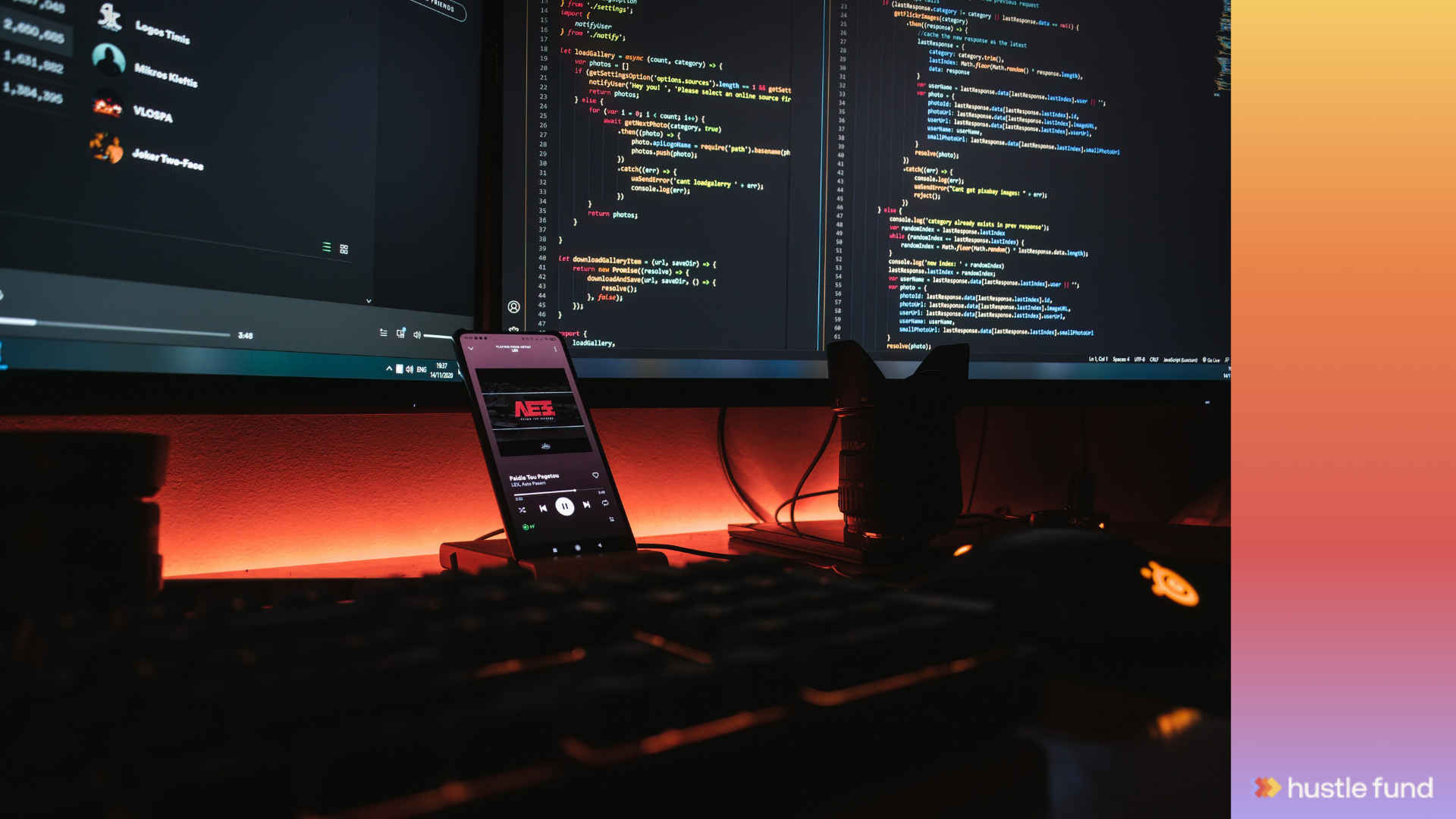On startups breaking even: the conversation that frosted my cookie
.png)
Brian Nichols is the co-founder of Angel Squad, a community where you’ll learn how to angel invest and get a chance to invest as little as $1k into Hustle Fund's top performing early-stage startups
Today’s topic: Why it's not a terrible thing when a startup aims for a path to break-even.
A few months ago, VC Twitter went a little nuts on the topic of "break-even startups."
The theme was: what is the implication for investors when founders aim for a break-even approach?
The frustrated, rhetorical question many investors had about this concept: what happens to all the investors on the cap table when a founder gets off the fundraising hamster wheel?
This conversation really frosted my cookie. And not in a good way.
My teammates at Hustle Fund and I discussed it at length. Below, I break down some of those thoughts, and explain why this is not such a bad thing.
First, some quick definitions
“Finding a path to break-even" — When a company gets to break-even, it means that they hit profitability. They’ve managed to reduce burn rate and increase revenue enough to be self-reliant.
This means the company doesn’t need to continue raising outside capital. They can get off the fundraising hamster wheel.
Of course, this usually means that growth has likely slowed down quite a bit. If the company doesn’t have an outrageous amount of money in the bank to fund their rocketship growth, the amount of money they can invest in their marketing efforts, R&D, or team growth is limited to the amount of revenue they earn.
Yet for founders, this might sound pretty darn appealing. It means they own a larger chunk of their business. And it means that they can control the future of their company without answering to investors or a board of directors.
“Markdowns” — This refers to a company’s valuation when it decreases after a fundraising round.
Let’s say you invest in a company at a $10m post-money valuation. If the company doesn’t hit their projected milestones, or if the market takes a big hit, this team will likely have trouble fundraising again.
If this happens, the valuation of the company will probably decrease. It could go to $0 if the company appears to fail completely.
This is probably obvious, but I’ll say it just in case: markdowns are a bad look for a VC. It decreases the overall value of the portfolio, which is a bad signal to the fund’s investors (LPs) and could make it challenging to fundraise in the future.
Why this frosted my cookie
I was pretty frustrated watching this conversation unfold on Twitter.
Look – I get it. Investors need to win big on at least a few of their investments in order to make their business work. Hustle Fund is no exception.
But much of this conversation centered around the idea that it's somehow wrong to encourage founders to pursue a break-even strategy because it will hurt investors.
And this is a short-sighted approach to investing. Why? Here are some reasons.
Because not raising subsequent rounds doesn't mean the startup can't achieve an exit.
Hustle Fund has backed over 500 startups. Some of our most successful companies survived some massive pivot or moment of extreme peril where it looked like failure was certain.
Those companies went on to raise more money at a higher valuation, or grow big enough to get acquired for a meaningful amount.
There are tons of massive, late-stage companies that barely raised any venture because they turned profitable quickly. In fact, many were forced forced to go this route BECAUSE they couldn't raise. A few that come to mind: Canva ($580M to get to $40B valuation), Zapier ($1.4M to get to $5B valuation), Calendly ($350m to get to a $3B valuation).
Just because a startup isn't raising on the schedule you want them to be on doesn't mean they won't be able to raise in the future. It also doesn't preclude them from providing you (their investor) with a big fat exit down the road.
Because founders who own a large percentage of their company are incentivized to keep working.
Building a massive startup takes time. Like, 10+ years. If a founder has sold off most of her company — largely at undesirable terms — the chances of her sticking around for the long haul are pretty small.
And even if that founder is open to bringing in a new CEO, the cap table might be too crowded to attract top talent. That is, a new CEO won't be able to get a big enough chunk of the business to feel incentives to stick with and grow the business.
Having a founder who is heavily incentivized to build a HUGE company is in everyone's interest ... especially the investors.
Because getting to break even can be a competitive advantage
A startup that can operate without outside funding is more de-risked than a startup that has high burn rate.
Imagine a startup that's in a hot, competitive space. Of the three leading companies in that space, two are heavily funded and one is self-reliant.
If we hit a black swan event (cough COVID cough) that affects market conditions, those two VC-backed competitors may not be able to raise again... for a while, at least. They might have to do layoffs, which leads to losing customers, which leads to potentially shutting down (or having a down round).
In this scenario, the self-reliant company is in a much stronger position to continue to operate, and could feasibly acquire their competitor's customers if the competitors fold.
Because the founder could make a huge comeback
Many years ago, Hustle Fund backed startup that unfortunately didn't make it.
When things started to look bad for the business, the investment team marked down the company in our portfolio, but didn't stop supporting the business. They offered advice, encouragement, and empathy during one of the founder's toughest moments.
A few years later, that same founder built a second business. And he remembered Hustle Fund. He brought us into this business at remarkably good terms, and then went on to scale the business into something pretty massive.
We expect this business to be a portfolio-returning company.
This is not a one-time miracle. This is a realistic outcome when investors support great founders.
Sure, TVPI is important.
Think of TVPI as basically the paper value of a company – more is better. The higher the value of a company, the higher the value of our portfolio, and the easier it is to convince LPs to invest in our fund.
But TVPI is just paper gains. It's not real until a portfolio company has an exit.
And prioritizing TVPI at the risk of pushing your portfolio founders into a bad position is a dangerous short-term strategy (for all the reasons listed above).
As one of my GPs put it, "that's kind of like eating 15 sugar packets and then saying 5 minutes later 'I feel great!'"
The reality is that a startup founder who pursues a path to break-even may never raise again. That founder may decide that a "lifestyle business" is good enough for them, and you could end up with a 0x or 1x return.
Or they might end up being the next Canva and become a $40B business. And if that happens, you — their early investor with a big chunk of the pie – will be very happy you continued to support them through the tough times.













